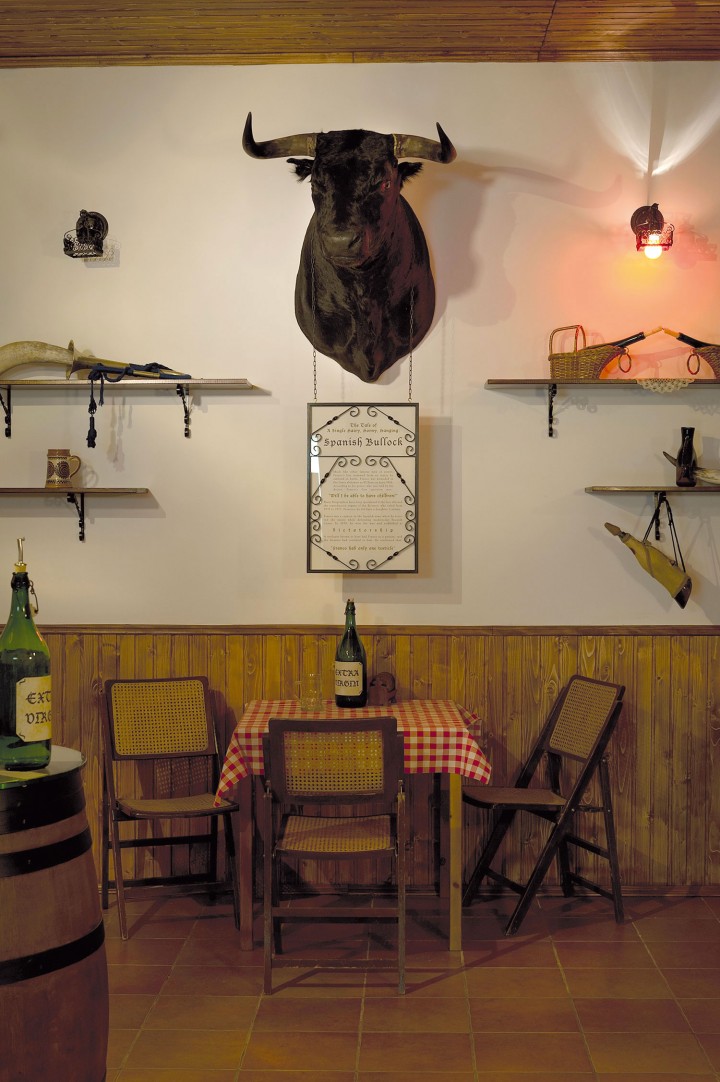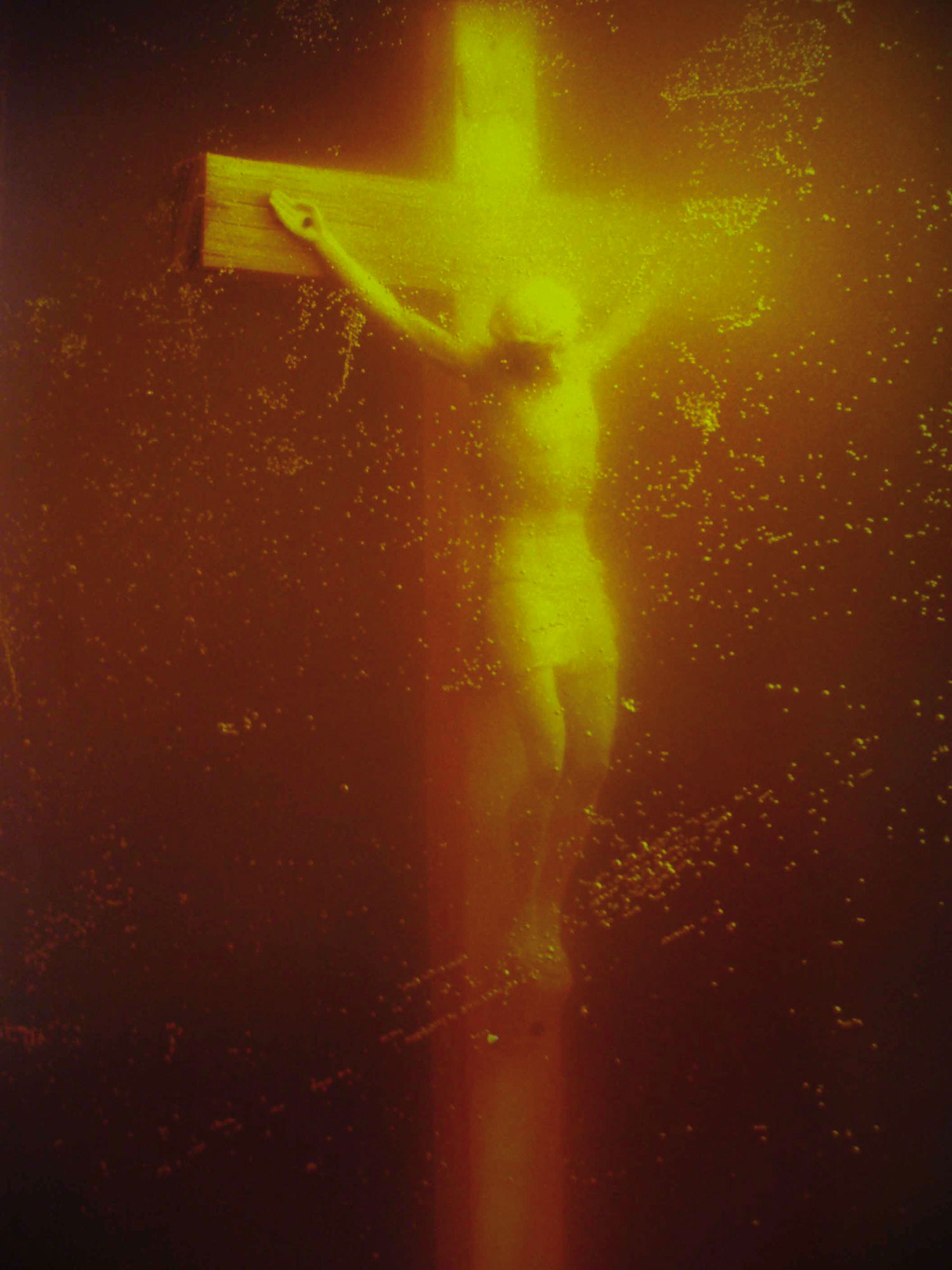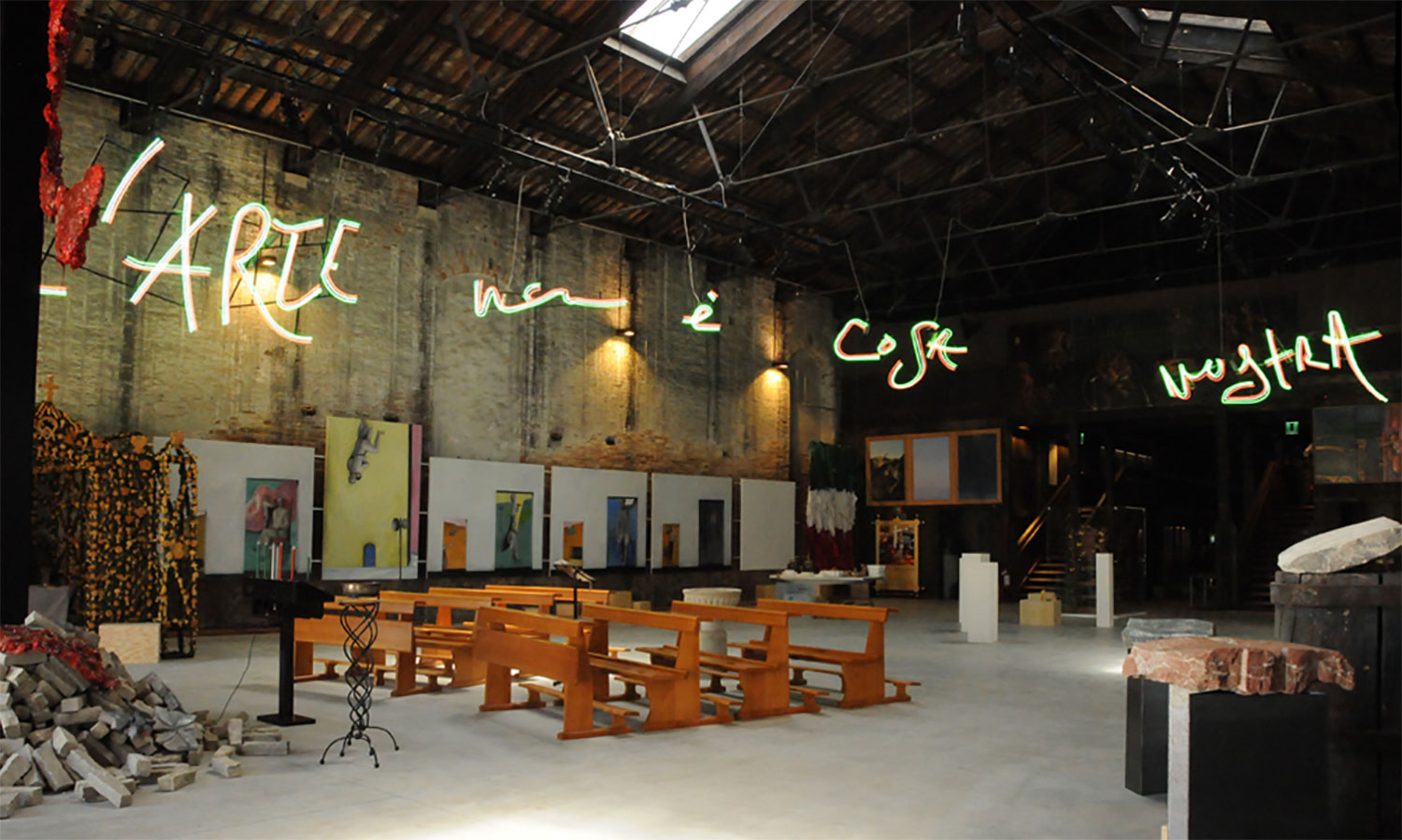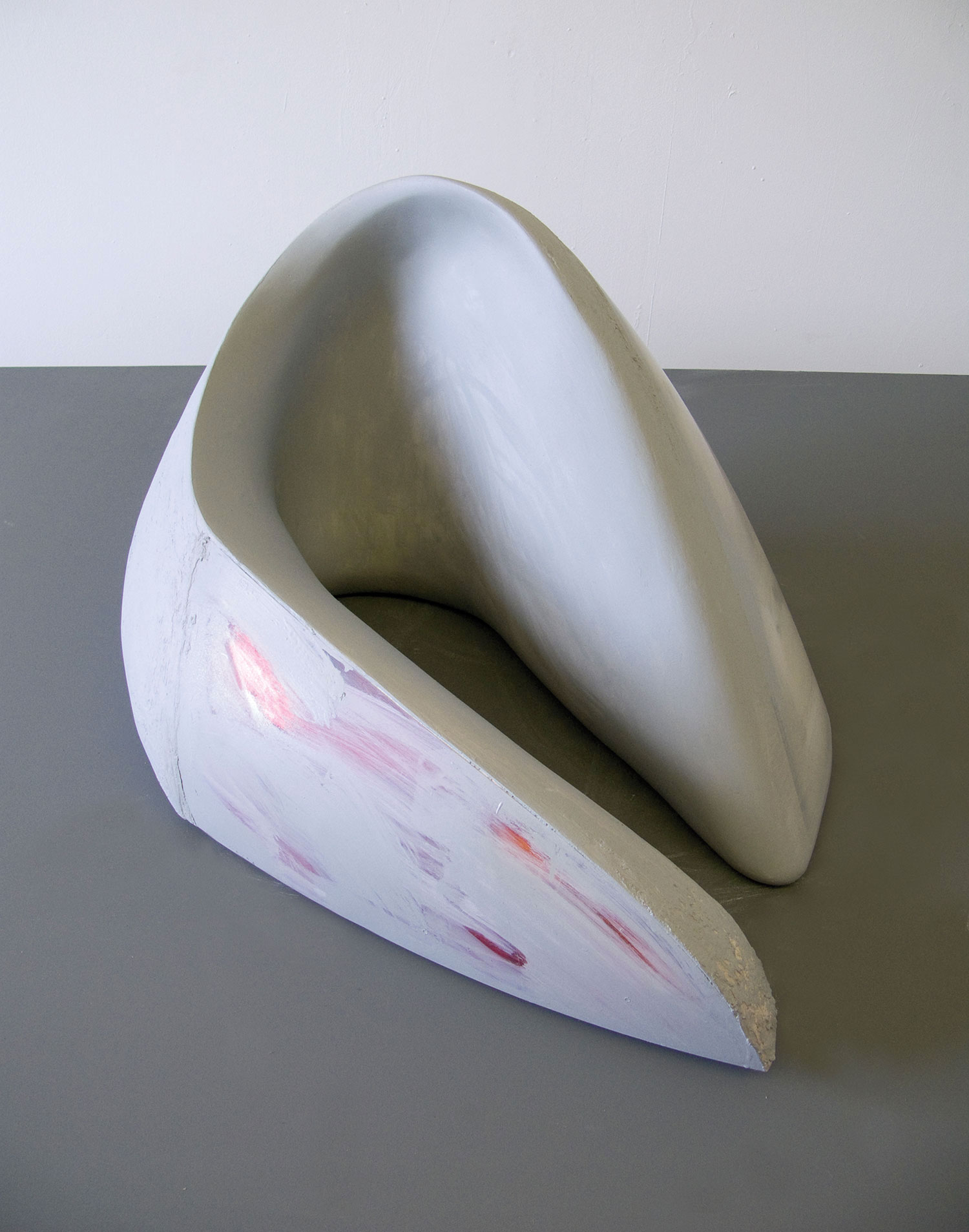
Martin Clark: Your work is very autobiographical. Can you talk about why you use your personal history so prominently in your work?
Simon Fujiwara: It all came out of very pragmatic reasons in the beginning. I came to art school having studied architecture, and quickly realized how much an artist’s personal life and history is read into his work — even as a student. It seemed I would never shake off the associations of my architectural past and be accepted as an artist so I decided to do something about it and take my history into my own hands. My first performance work, The Museum of Incest (2007-ongoing), dealt specifically with my architectural past, but at the same time was a wildly personal father-son portrait. In the process I started to reflect on the historic role of an artist; how, through the ages, the artist has been associated with the telling of some kind of “inner truth.” Even though it’s an idea that had been kicking around for a few centuries now, it still persists in the way we read artworks today. Who made it? Where did the artist come from? When did they make it? Looking at art is conditioned by biographical information sometimes more, sometimes less personal. I didn’t realize how deeply this Freudian associative legacy ran until I made the performance Welcome to the Hotel Munber (2010), where I recount a story about my parents’ owning a hotel under the Franco dictatorship in Spain, as erotic fiction — which is ripe territory for Freudian interpretation. Nevertheless, what is peculiar with this performance is that I start out by saying, “I have never been to the hotel my parent’s owned, I was born after they had left Spain, so all I can tell you is a fiction based on the stories they told me.” Yet, by the end of the performance, most people seemed to have concluded that I had made the work because of the deep childhood connection I had to the hotel “I grew up in,” essentially inventing a whole new narrative in an attempt to lend significance to the work. It was alarming and exciting to realize that you can stand in front of an audience and say, “I am telling you a lie” and they can come out thinking and feeling the exact opposite. Journalists even began to write that I was born in Spain which, whilst being completely false, appealed to the part of me that is in all of us. The part that wonders what would it be like to live another life…
MC: You’ve mentioned to me your interest in Surrealism in relation to your work. Your work is perhaps not obviously surrealist, though it does seem to draw on these strong psychosexual undercurrents, and there is a marked eroticism and fetishism that is very distinctly relatable to Surrealism. Can you say a bit more about this?
SF: The Surrealists have been an important influence on my work, in particular their focus on analyzing and manipulating the everyday experience. I believe they were extremely pragmatic artists in that sense. In the context of a rigid and slowly crumbling European society, many Surrealists made what was essentially political or reactionary work. Yet, it is universal enough to still be enjoyed today because of its embrace of certain human problems that have not changed. One of these is oppression/repression, which Buñuel deals with in practically every film, be it oppression by an institution (church, family) or from within — a self-imposed repression. Another idea is conflict, which is, as Bataille would say, “life itself.” Simple pairings of ideas that cause conflicts are often a starting point for my scripts. In The Museum of Incest or Welcome to the Hotel Munber I chose to pair two major themes: family and eroticism, and use the guise of a formal structure — an imaginary museum, an unfinished novel — to allow a drama to play out around that conflict. Starting with a conflict, with an un-resolvable conundrum, leaves you free to not look for solutions or for morals in the stories. You know from the start there is no happy ending. With Buñuel, I was always attracted to the atmosphere in his films, the way the sets were used, the lighting and the prosthetics, the not-always-convincing acting. For me the artifice of it all makes the absurdity more plausible and brings the subtext to the forefront, which is something that I like to do.

MC: Theatricality has often been seen as a dirty word in art, albeit one that has been routinely reclaimed. Your work is unashamedly theatrical, both in its performative quality as well as the prop-like, stage-set type installations and objects. But there is also a very strong emotional charge, one that at times becomes theatrical in a very real sense. Are you OK with this highly emotional tenor to the work? How far would or could you go with this aspect?
SF: The theatricality in my work started, I would say, with Desk Job (2009), which I made for the Scandinavian Pavilion at the 2009 Venice Biennale and was the first work that I was commissioned to make where I could not be personally present to perform. I realized that the sculpture itself would need to tell the story, to perform for me, as it were, drawing people into the story I was trying to tell. I didn’t realize at the time, but my concerns were essentially the same as those of a theater designer or a film production designer, who similarly thinks of interiors, furniture and objects in this economical kind of way — economical in the sense that everything that is shown or selected is there to drive and reinforce a story. I worked as a set designer and theater director for various operas and plays alongside my studies as an architect, so it came very naturally to me. The Hotel Munber installation expanded on this, where there is a performance that tells one story, but the full reconstruction of my parents’ bar as a set tells another aspect of that story. I knew that it would be simply impossible that visitors would understand the whole meandering narrative by just being in the installation, but I wanted to create an atmosphere that would make people curious enough to ask questions and investigate it for themselves. On first glance the bar looks like any kitsch cozy Spanish tapas place you could find on the Costa Brava, yet when you looked more closely at the details, a more sinister, repressed homoerotic subtext pervaded everything. It was interesting to see how people reacted to this installation, because once they found one erotic detail, they began to look for this in everything to the point where I had people telling me that they found wine baskets deeply erotic! They were making their own sexual associations with the castanetes, the jamóns, the dripping candles.
MC: I want to ask you about “sincerity” in your work. A lot of the work uses humor, puns, jokes, one-liners, as well as this highly charged emotional engagement. It’s often quite “stagey” on one level and yet there seems to be a deep and very serious seam running through the work, one that feels very authentic despite how you dress it up.
SF: I realized quite early on that the ideas I was interested in working with — sexuality, identity, history — were subjects that had been dealt with quite extensively in the ’90s and before by many artists, and yet I never felt completely satisfied with the visual language that was used, which often presented “social problems” in an accordingly serious documentary-style language: black-and-white photos, grainy performance shots, long wall texts. Every sphere of public media is becoming more and more focused on entertainment today — if you watch CNN for five minutes you can see that the news is being dressed up to look and feel like a drama that prioritizes the viewer rather than the subject. In my experience, even though we are all much more aware of the problems around the world — corruption, oppression, injustice, wealth gaps, etc. — we are given no space to react to it because information is presented as a product. I wanted to deal with this present reality in some way. So while on the one hand I openly flaunt the same tricks as other fields of entertainment — emotional, personal stories, characterization, music and lighting — on the other hand the audience works much harder because there is this underlying sincerity to my work that becomes surprising and sometimes uncomfortable in my performances.
MC: History and archaeology is a recurring subject, as well as a theme, running throughout the works. Is this simply a metaphor for your own processes of personal excavation of your family history, biography, etc. or is there another aspect to this? Are you drawn to these disciplines or subjects in and of themselves?
SF: I have always felt affection for archaeology because I can’t help finding the entire process essentially comical — philosophically comical. On the one hand the archaeologist is dealing with dry bone fragments and ugly boring pottery and on the other hand he is trying to piece together the entire story of human civilization. I like the scale discrepancy of such grand ideas embedded in tiny, banal objects. I was also moved by the personal stories of archaeologists such as Louis Leakey that I was researching when developing The Museum of Incest project. Leakey’s egoistic drive to succeed as a world famous archaeologist was so strong that he managed to convince the media that the body he had found in East Africa — Homo Habilis — was the “First Man.” He spun this narrative about the mammal being the first to use stone tools, thus being the first civilized being, the first human. Now there were other similar bodies discovered that were older than Homo Habilis, but because of Leakey’s rhetorical skill he managed to convince the world with his story, which turned him into a superstar. I’m simplifying here, but the point is that these shared mega-histories often serve a personal agenda as much as a scientific quest. Archaeology is interpretation, as is history.

MC: You’ve produced a number of ambitious new works over the past 18 months for Manifesta 8 in Murcia, Bienal de São Paulo, the Frieze Art Fair, Art | Basel, Proyectos Monclova in Mexico City, Giò Marconi in Milan, etc. The next 12 months look equally busy with new works for Performa 11 in New York, and the big exhibition we are working on together at Tate St Ives. How much are all of these works “chapters” or episodes in a much larger “über-project”? What’s the relationship between them, and how are they developing?
SF: While I was developing each work, it was never a conscious idea to weave the works together into a single grand narrative, and I’m not yet sure if this is entirely plausible. However, the one thing that does connect almost all of the works in some way is that my supposed biography is at the core of the works. Whilst each work and performance creates its own world, I’m working now on combining them, editing them, to create a kind of single narrative that is even more rambling, complex and contradictory; it’s this that I aim to show at Tate St Ives in the form of a string of installations.
MC: So do you see the show as a kind of conclusion, a bringing together, a moment to move on?
SF: The funny thing about doing the Tate St Ives show is that it’s by far the biggest show in terms of scale I’ve yet prepared, and it will cover a lot of ground — stories ranging from African archaeological hunts, Amazonian expeditions, Franco sex tales from the ’70s, etc., and yet it will be presented in my home town, part of the audience will be people I went to school with and who I have lost touch with since I was 16. As you know, St Ives is a pretty small place. People like to gossip a lot. But not so much happens. My mum runs a local kindergarten and the more of my work she sees, the more worried she’s getting about what the children’s parents will think! But to answer your question, all of the stories still change every time I perform them. As I do everything from memory, the scripts are long abandoned, and as my memory changes, the works change. I don’t film my performances, so if I ever knock my head and forget everything, the works are gone too. So in a way I’d like the show to be a snapshot in time of all the works, together, at that moment, before they all disappear into the world again to all their separate owners and live their own lives.





